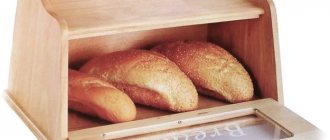In every family, a large number of boots and ankle boots, shoes and sandals, sneakers and sneakers has long become the norm. And if the apartment does not have a very large hallway, you have to look for options for storing shoes. The seasonal one, finally “released”, can easily fit on a shoe rack.
For the same shoes that have conscientiously spent their time, it is necessary to create suitable conditions for better preservation of your favorite boots and shoes. And there’s no getting around it, but four times a year you have to deal with shoes in order to first properly prepare them and then place them in storage.
I am a proponent of storing shoes in boxes, so the lower shelves of the hallway cabinets are used to arrange these different sized shoe containers. When the season changes, the boxes are simply rearranged from one closet to another, which saves me time rather than wasting it on finding the right pair.
Preparing shoes for storage
Winter has already arrived in my city. On October 19, there was heavy snowfall, so winter boots, ankle boots, boots, and sneakers have already taken their everyday place.
And autumn shoes need to be put away for storage, and this, of course, will require more time.
The first step is to put the shoes in order while simultaneously inspecting whether they require repair:
- Wash products made from natural and artificial leather under warm running water;
- I put fabric shoes, sneakers (sometimes soft sneakers) in the washing machine;
- I clean boots, boots, shoes made of velor and suede with a rubber brush.
After drying at room temperature, I treat the inside of all shoes with an antiseptic.
When preparing casual and sports shoes for storage, antibacterial treatment will not hurt them. Use an electric dryer with ultraviolet light to destroy fungus and bacteria that have settled inside the shoes during seasonal wear. The unpleasant smell will disappear along with them.
I impregnate external leather surfaces with protective creams, and treat suede and velor products with suitable sprays.
Shoe storage conditions
The place that is planned to be used for storing shoes should be
- dry;
- ventilated;
- protected from light.
That is, all rooms inside the apartment are suitable for storing shoes. You can use the bottom shelves of cabinets, mezzanines, and pantries for this if you place a rack there.
For shoes, the following storage conditions must be observed: humidity not higher than 70%, temperature from 8°C to 22°C.
Shoes cannot be stored
- on the balcony and loggia;
- in damp closets and basements.
How to store sneakers without boxes
Sneakers and other shoes intended for the warm season should be sent for storage after certain preparation. Most often, such products are stored without boxes, since otherwise storage will require huge premises. But if you have a large closet, then of course it is better to store it in boxes.
Each item should be carefully inspected. If your shoes require repairs, they should be repaired immediately. This will eliminate the need to go to workshops next summer. You can make minor repairs and remove minor dirt from shoes yourself, without the help of a specialist.
Before storing your sneakers, you will need to dry them thoroughly and then place them in boxes, special bags or organizers. Such organizers can be bought in specialized stores, supermarkets, or you can build them yourself. In any case, storing shoes in bulk without boxes is not recommended.
All items must be:
- cleaned from dirt and dust;
- renovated;
- stuffed with newspapers or special inserts to maintain shape (if necessary);
- packaged in appropriate organizers with enough space to prevent deformation.
The material of the product dictates the storage conditions
When using bulky boxes or organizers to place shoes, there are a few rules to remember.
- Suede does not tolerate any proximity, so it is better to allocate a personal box for shoes made of this soft and capricious material.
- Fabric shoes, since they easily absorb moisture, are usually stored separately from leather ones.
- Leather products do not like elevated temperatures, so they require periodic ventilation.
Shoes will be more preserved if you put paper or fabric between shoes of even the same pair.
Also, do not neglect periodically checking the storage for the presence of moths.
General recommendations
GOST tells us that shoes must be stored in the following premises:
- dry;
- ventilated;
- protected from groundwater and precipitation;
- not too warm.
The ideal humidity is no more than 70 percent, and the temperature is:
- minimum +8 °C;
- maximum +20.
In general, it is recommended to create the same storage conditions for clothing.
Any type of shoes must be dried before putting them away. Even a small amount of moisture remaining in the material will quickly destroy it. In addition, dampness provokes the development of mold and fungi, and this is already dangerous for the health of the owner.
You can’t store shoes that haven’t been cleaned, because all the dirt will have time to be eaten in a few months, and it will most likely not be possible to remove it later. Moreover, if any damage is discovered, the pair should be immediately taken for repairs - this way you will avoid unpleasant surprises at the beginning of the next season.
It is not recommended to keep shoes in bright rooms. The sun's ultraviolet light easily damages paint.
Excessive dry air is harmful to leather products, so you should choose a place to store them away from radiators and other heat sources.
Additional protection is provided by shoe polish - it is applied in a fairly thick layer and only rubbed in a little.
Another extremely important point is that you should not allow:
- deformation of shoes - cracks appear on the bends;
- storing it in a general pile - the material gets scratched.
At the very least, each pair should have its own box.
Shoe storage options
Today, manufacturers of furniture and household equipment offer a wide selection of options, depending only on the storage location and the readiness of your home to accept one or another method.
- For seasonal shoes stored in the hallway, the following are convenient:
- racks of various configurations and sizes, ready to accept dozens of pairs of shoes on their inclined shelves;
- small cabinets, if their upper part is a seat or sofa, which will provide the opportunity to put on your shoes in comfort.
If the design of the hallway has not been completely thought out, and you don’t want to buy something temporary, be smart, put your hands to it and create something











